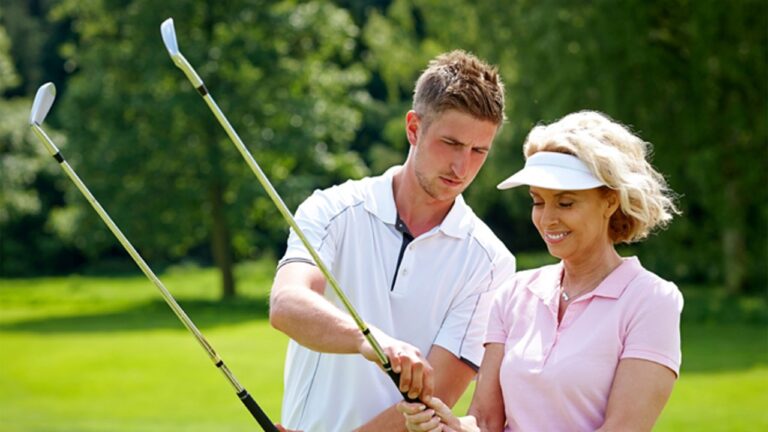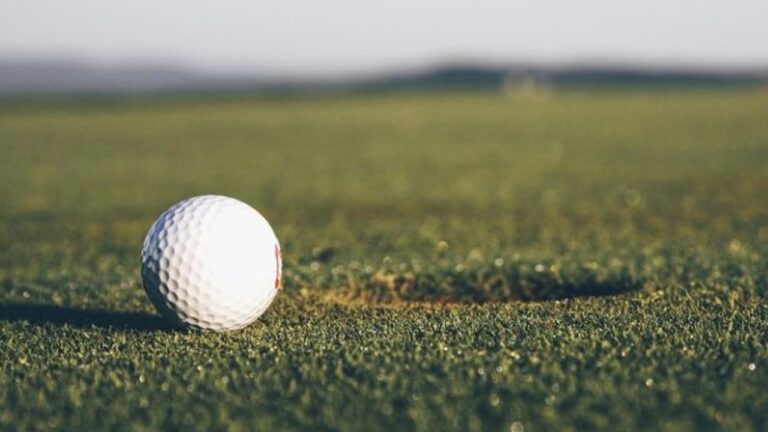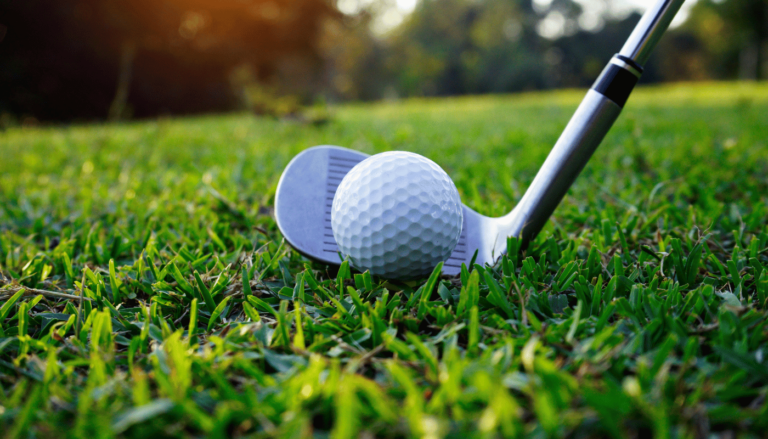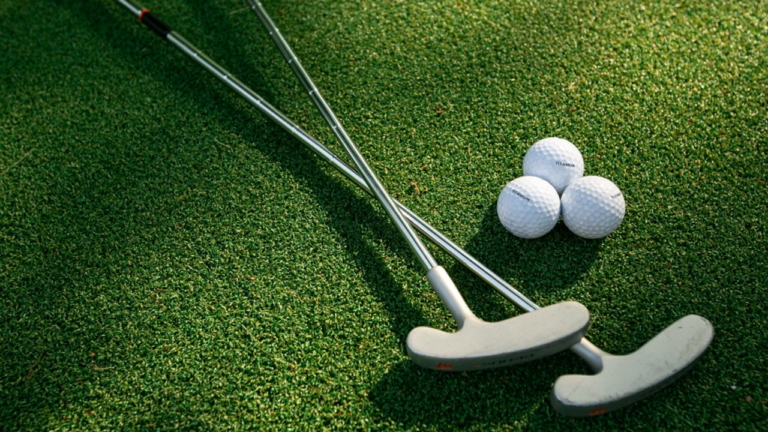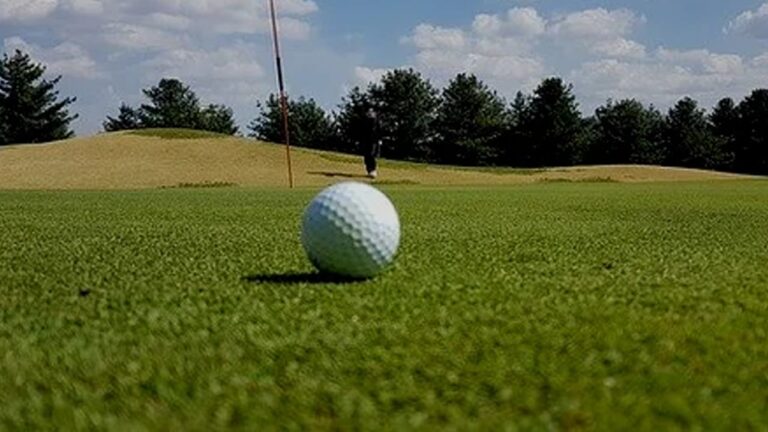How to Backspin a Golf Ball: Master the Technique Easily
Mastering the art of backspinning a golf ball is a coveted skill that can dramatically improve your short game, making those approach shots stick on the green with precision. This guide will unlock the secrets behind the perfect backspin, from understanding the mechanics to choosing the right equipment and technique. Whether you’re a beginner looking to impress or an experienced golfer aiming to refine your skills, discover the steps to achieving that elusive, game-changing backspin.
Understanding Golf Ball Spin Mechanics
Mastering the art of imparting backspin on a golf ball not only requires skill but also a deep understanding of the mechanics behind golf ball spin. This phenomenon directly influences how the ball behaves once it lands on the green, often dictating the difference between a good shot and a great one. At its core, backspin is generated through the interaction between the golf ball, the clubface, and the angle of attack. The right combination of these elements can cause the ball to spin backwards, resulting in it stopping quickly upon landing or even rolling back towards the player.
The amount of backspin imparted on a golf ball is significantly influenced by the grooves on the clubface. These grooves grip the ball upon impact, creating the spin necessary for precise control on the green. Additionally, the angle of attack—the angle at which the club approaches the ball—plays a crucial role. A steeper angle increases the likelihood of creating more backspin. However, it’s essential to find the perfect balance, as too steep an angle can lead to less effective shots.
Furthermore, the condition of the golf ball and the clubface can drastically affect spin rates. A clean ball and clubface ensure maximum interaction between the ball’s surface and the club’s grooves, vital for generating backspin. In contrast, a ball or clubface marred by dirt or debris can impede this interaction, reducing the amount of spin. Thus, maintaining clean equipment is not just about aesthetics but is crucial for optimal performance on the course.
Deeper Insights into Golf Ball Spin Mechanics
Delving further into the mechanics behind golf ball spin, it becomes clear that the material and design of the ball also play pivotal roles. Modern golf balls are designed with specific layers and materials that enhance their ability to be spun. The outer layer’s softness allows for better compression against the clubface, which is essential for creating backspin. Understanding these intricate details can empower golfers to make informed choices about their equipment, potentially improving their game.
Exploring the Impact of Environmental Conditions
Environmental conditions such as wind, humidity, and the green’s wetness can also impact the effectiveness of backspin. For instance, a wet green may reduce the backspin’s braking effect, causing the ball to slide more upon landing. Conversely, playing in dry conditions may enhance the ball’s grip on the green, allowing for more precise control over the ball’s stop. Adjusting one’s technique to accommodate these variables is a hallmark of experienced golfers.
| Factor | Impact on Backspin | Tips for Optimization |
|---|---|---|
| Grooves on Clubface | Essential for gripping the ball and generating spin. | Keep the clubface clean and check for wear. |
| Angle of Attack | A steeper angle can increase backspin. | Practice to find the right balance without sacrificing distance. |
| Ball Condition | A clean ball ensures maximum interaction with the clubface. | Regularly clean the ball during play. |
| Environmental Conditions | Wind, humidity, and wetness can affect spin. | Adjust techniques according to conditions. |
| Equipment Choice | The right ball and club can enhance backspin. | Choose equipment that complements your play style. |
Selecting the Right Equipment
Mastering the backspin in golf is not just about technique; it also heavily depends on having the right equipment. The clubs and balls you choose play a pivotal role in your ability to impart backspin on your shots. Understanding the dynamics between club selection and ball type is essential for any golfer looking to improve their control on the greens.
The first step in selecting the right equipment is choosing a wedge with the proper loft and bounce for your playing style. Wedges with higher loft angles, typically ranging from 56 to 60 degrees, are more conducive to creating backspin. The grooves on your wedges are also crucial; freshly milled grooves that are clean and free of debris enhance friction, thereby increasing the backspin. It’s also helpful to consider the bounce angle of your wedge, as it can affect the club’s interaction with the turf at impact.
Ball selection is equally important. Opt for balls with softer covers, such as urethane, which are better suited for generating backspin. These balls have a softer feel and provide more spin on approach shots and around the greens, compared to the harder cover balls designed for distance. Understanding the synergy between your equipment and the technique is vital. For example, using a high-quality wedge with a soft-cover ball can significantly enhance your ability to control the ball’s spin and, ultimately, its stopping power on the green.
- Choose a wedge with a loft angle suited to your playing style and conditions.
- Ensure your wedges have clean, sharp grooves for maximum friction and spin.
- Select a golf ball with a soft cover, like urethane, for enhanced backspin.
- Consider the bounce angle of your wedge to improve turf interaction.
- Regularly replace equipment that has worn out, such as old balls or clubs with dulled grooves.
In addition to selecting the right clubs and balls, it’s also essential to consider the conditions under which you play. Moisture, whether from morning dew or after a rain, can affect the amount of spin you’re able to impart on the ball. Similarly, the type of grass and the firmness of the greens can influence how your ball reacts upon landing. Integrating these factors with the correct equipment will maximize your ability to execute a backspin effectively.
Mastering the Backspin Technique
The ability to backspin a golf ball is a coveted skill that can dramatically improve your short game, giving you an edge on the greens. Mastering this technique requires understanding the dynamics of the golf swing, the ball, and how they interact with the turf. The key elements involve the club selection, the angle of attack, and the quality of contact between the club and the ball. By focusing on these aspects, golfers can achieve the desirable backspin that makes the ball check up quickly on the greens.
To start, selecting the right club is crucial. A wedge with a high loft, such as a sand wedge or lob wedge, is typically the best choice for generating backspin. These clubs are designed to lift the ball quickly and with a significant amount of spin. The condition of the clubface also plays a vital role; a clean, somewhat rough surface helps create more friction, which is essential for backspin. Secondly, the angle of attack must be steep enough to strike the ball first before making contact with the turf, slicing underneath the ball in an upward motion. This action is facilitated by positioning the ball slightly back in your stance and by ensuring your hands lead the clubhead at the point of impact.
Finally, the quality of contact is paramount. Achieving a clean, crisp contact with the ball without any interference from the grass or dirt ensures the club’s loft and the generated speed work together to create the desired backspin. The follow-through of the swing is also important; a complete follow-through ensures the club maintains its speed and trajectory, maximizing the spin potential. Practice and consistency in these techniques will lead to better control and the ability to backspin the ball effectively on the greens.
Further Insights on Backspin Mechanics
Delving deeper into the mechanics of creating backspin, it’s important to understand the role of the grooves on the clubface. These grooves are designed to channel away moisture and debris, allowing for cleaner contact with the ball. Additionally, the speed of the swing and the compression of the ball against the clubface can significantly influence the amount of backspin generated. A firmer golf ball, for instance, might not spin as much as a softer one, but it could provide more control for some players. Experimenting with different balls and clubs, while keeping the fundamental techniques in mind, can help golfers find the best combination for their game.
Equipment Considerations for Optimizing Backspin
Choosing the right equipment is essential for mastering the backspin technique. The type of golf ball, the condition of the clubface, and even the weather conditions can all affect the ability to generate backspin. A clean, dry ball and a dry clubface provide the best conditions for maximizing friction and thus spin. Regular maintenance of the clubface, ensuring the grooves are clean and sharp, will also improve backspin capabilities.
| Factor | Importance | Tip |
|---|---|---|
| Club Selection | High | Use high-lofted wedges |
| Angle of Attack | Critical | Steep, with ball back in stance |
| Quality of Contact | Essential | Clean and crisp with the ball |
| Clubface Condition | Important | Keep clean and rough |
| Golf Ball Type | Variable | Softer balls may enhance spin |
Understanding and applying these insights will not only help in mastering the backspin technique but also in refining your overall approach to the game. The interplay between the right equipment and the correct technique cannot be overstated. With dedication and practice, the ability to backspin a golf ball effectively will become a valuable part of your golfing arsenal, offering greater control and precision on the greens.
The Importance of Ball Position
Mastering the backspin in golf is not just about the swing technique but also significantly depends on the ball position. A proper ball placement can be the difference between a ball that obediently halts on the green and one that defiantly rolls off the edge. It’s crucial to understand that the ball’s position affects the angle of attack, a key element in generating backspin. By positioning the ball correctly, golfers can ensure a cleaner strike, which is essential for creating the desired spin.
For most effective backspin, the ball should be placed slightly forward in your stance. This position allows the club to make contact with the ball at a downward angle, which is critical for generating backspin. However, it’s important to not place the ball too far forward as it might lead to a thin shot or even a miss. Similarly, placing the ball too far back in the stance could result in too steep of a descent, making it difficult to control the ball’s trajectory and spin. The sweet spot for ball position, therefore, lies in its strategic placement that aligns with your swing’s natural arc and the club’s design.
Further Insights on Ball Position and Backspin
Understanding the dynamics of ball position goes beyond the basics of placement. It involves recognizing the interplay between the ball, the club, and the turf. The condition of the turf, the type of club used, and even weather conditions can influence how the ball should be positioned for optimal backspin. Experimentation and practice are key to finding the ideal position under varying circumstances.
| Club Type | Recommended Ball Position | Expected Backspin |
|---|---|---|
| Wedge | Center to slightly forward | High |
| Iron | Slightly forward | Medium to High |
| Driver | Forward | Low to Medium |
| Wood | Forward | Low |
| Hybrid | Center to Forward | Medium |
Delving Deeper into Ball Position
The pursuit of mastering backspin is a testament to the intricacies of golf. Ball position, while seemingly a simple concept, holds profound effects on the game’s outcome. It’s a component that demands attention and respect, as it intertwines with the fundamentals of physics and the golfer’s skill. Understanding and applying the principles of ball position can transform your approach to each shot, opening doors to a level of precision and control previously unattained. This journey of discovery is not just about perfecting a shot but embracing the art and science of golf.
Practicing on Different Surfaces
Mastering the backspin in golf is not just about perfecting your swing but also about understanding how different surfaces affect the ball’s behavior. Each type of terrain, from the lush fairways to the sleek, manic greens, presents its own challenges and opportunities for applying backspin. Practicing on a variety of surfaces allows golfers to adapt their technique to any situation, ensuring they can control their ball with precision wherever it lands.
For instance, achieving backspin on a wet surface requires a slightly different approach compared to a dry one. Moisture affects the friction between the ball and the surface, necessitating adjustments in the angle and force of the swing. Similarly, denser grasses found in the rough can impede the ball’s spin, making it crucial to practice in these conditions to learn how to compensate effectively. By experimenting on different terrains, golfers can develop a keen sense of how to modify their swing and grip, enhancing their overall game.
Understanding Surface Impact on Spin Dynamics
Each surface type impacts the ball’s spin differently, influencing how the ball reacts upon landing. Sand traps, for example, require a softer touch and a more precise angle to ensure the ball doesn’t just sink. Conversely, practicing on harder surfaces like fairway or even synthetic mats will give you insight into generating sufficient spin to stop the ball quickly on the green.
Adapting Your Approach for Various Terrains
As golfers delve deeper into practicing on different surfaces, it becomes clear that adaptability is key. Understanding the nuances of each terrain allows for more strategic plays and can significantly lower scores. This adaptability extends beyond just the physical technique; it encompasses strategic planning and foresight, predicting how the ball will behave upon landing and rolling.
| Surface Type | Adjustment Needed | Expected Impact on Spin |
|---|---|---|
| Fairway (Dry) | Standard approach | High spin potential |
| Green (Wet) | Less force, more precision | Reduced spin control |
| Rough | Increased force, adjusted angle | Impeded spin |
| Sand | Soft touch, precise swing | Variable spin based on technique |
| Synthetic Mat | Practice for fairway simulation | Consistent spin control |
In conclusion, the ability to apply a backspin effectively under varying conditions is a skill that can dramatically improve your golf game. Practicing on different surfaces not only hones your technique but also expands your strategic options on the course. By embracing the challenges posed by each type of terrain, golfers can ensure they are prepared for any situation, leading to more confident and successful plays.
Sarah Johnson is a golf enthusiast and betting expert with over a decade of experience in the sport. She provides insightful analysis and tips on golf betting, helping both novices and seasoned bettors make informed decisions. Her expertise extends to evaluating betting platforms, understanding odds, and crafting strategies for success. With a focus on enhancing your betting experience, Sarah combines her passion for golf with a deep knowledge of betting trends to guide you through the complexities of wagering on your favorite sport.


